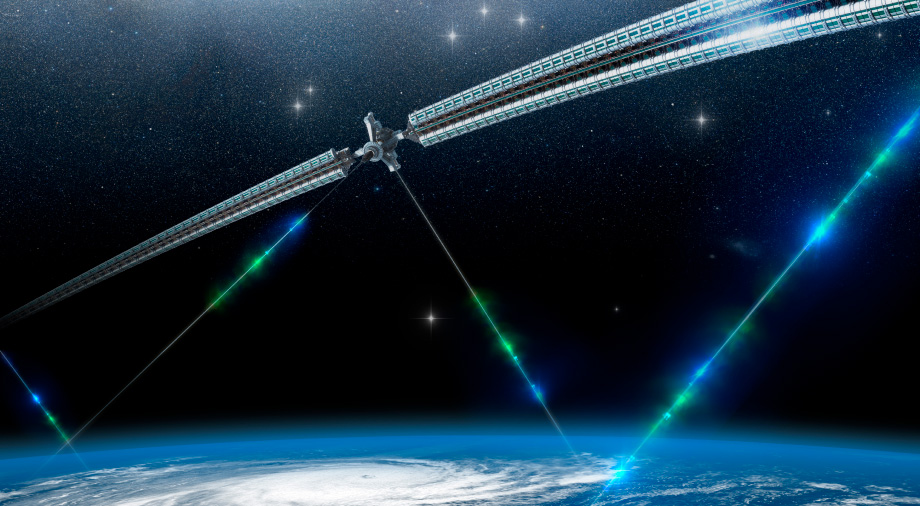In the first part of our material, we examined the most popular concepts of orbital settlements that humanity could create. All of them are united by the fact that their construction will require building materials in significant volumes to somehow be delivered into space.
One potential solution to this problem is their extraction on the Moon with subsequent transportation to an assembly site. However, in addition to the obvious advantages, this method also has a number of disadvantages. Moreover, in order to start large-scale extraction of resources on the Moon, humanity will have to build a full-fledged industry there, which, again, involves the transportation of a large amount of cargo there.
The use of traditional chemical rockets for this task is extremely expensive. Fortunately, humanity knows about an alternative in the form of a space elevator.
Space elevator
Simply put, the concept is as follows. A heavy-duty cable is pulled from the Earth’s equator into space. It is mounted on a counterweight located at a point just above geostationary orbit. The centrifugal force will always keep the cable taut. Next, a lift is installed on it for the transport of goods and passengers. The force of the Earth’s rotation accelerates the cargo capsule, which allows the payload to be launched directly into orbit without using fuel.
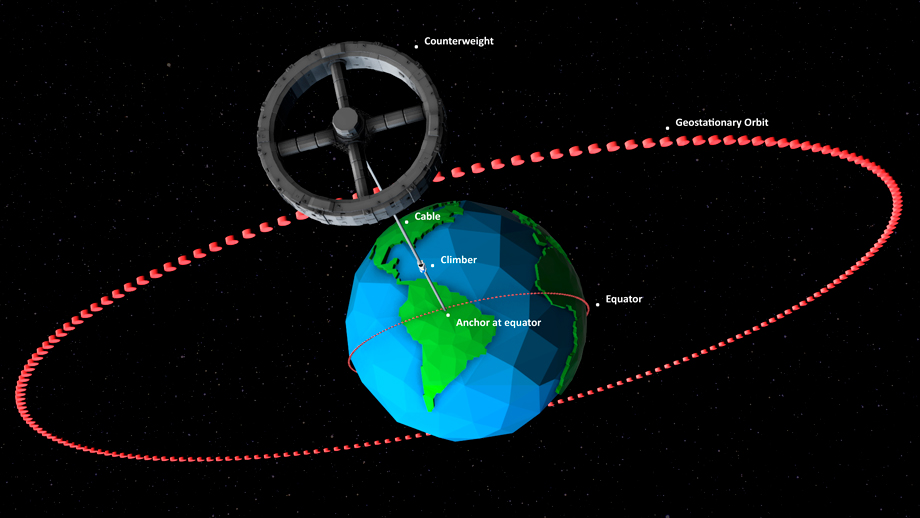
In words, everything is extremely simple. But, of course, in order to build a space elevator, its builders will have to solve a number of very non-trivial tasks. The key one is the cable, which must withstand huge loads and at the same time not collapse under its own weight.
To date, carbon nanotubes are considered the most promising material for creating it. In theory, they may have sufficient strength to cope with the tasks assigned to the cable. In practice, everything is somewhat more complicated. So far, no nanotube has proved strong enough in laboratory testing to match the values necessary for the implementation of this sort of project. Another problem that is still waiting to be solved is how exactly to braid them into a cable with a length of over 40,000 km.

Not surprisingly, many engineers are trying to find an alternative to carbon nanotubes. One of the proposed options is ultra-thin diamond threads. The results of some experiments indicate that they can have even greater strength than nanotubes. But this too is just a theory that is yet to be confirmed.
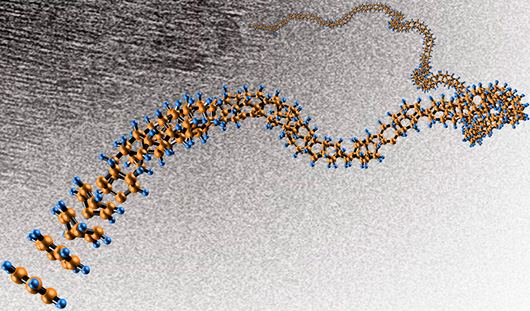
The next important issue is the location of the base of the space elevator. In the novel Fountains of Paradise, Arthur C. Clarke elegantly solved this problem by moving a copy of the island of Sri Lanka to the equator. In reality, of course, everything is far more complicated. An above ground site would be a cheaper option, but builders need to carefully evaluate all potential risk factors, such as the tectonic stability of the region, as well as the likelihood of floods and other natural disasters that could threaten the integrity of the structure. In addition, the political aspect would need to be accounted for.
The base could also be placed on an offshore platform. This option is more complicated and more expensive to implement, but at the same time would avoid the problems associated with the nationality of the space elevator. Another plus would be the ability of an offshore platform to maneuver, which will give it the ability to evade threatening hurricanes and storms.

We also must not forget about the need to protect the elevator from collisions with space debris, and its passengers from the effects of the Earth’s radiation belts. In addition, it is important for designers to decide on a counterweight. For this, one could use some kind of heavy object like a space station or a captured asteroid, to which the end of the cable would be attached. Another option is to use a second cable (or a continuation of an existing one) as a counterweight, directed in the direction opposite to the Earth. It would straighten and stretch under the action of centrifugal force, which would allow it to be used as a catapult to launch a payload into interplanetary space.
If the designers manage to solve all these problems, humanity will have at its disposal a direct avenue to space. True, the construction of a space elevator would cost a staggering amount. But once put into operation, it would make it possible to quickly deliver a large number of cargoes into orbit almost free of charge (when compared with the price of launching them on traditional rockets).
This would allow for the implementation of many large-scale projects, such as the creation of orbital settlements at Lagrange points or of support for the colonization of other planets in the solar system. A space elevator could even come in handy in the fight against global climate change. For example, giant cosmic mirrors built with its help, reflecting part of the sunlight falling on the Earth’s surface, would help cool the planet, offsetting the effects of global warming. It is also worth mentioning the prospects of orbital solar power plants that could eliminate our dependence on the burning of fossil fuels. The presence of a space elevator would radically facilitate the process of building such megastructures.
A space elevator could allow humanity to realize a centuries-old dream: to reach other stars. All starship projects developed to date involve the creation of spaceships weighing many thousands of tons (without taking even accounting for the accompanying infrastructure like accelerating lasers). If humanity is ever destined to go to other stars, it will most likely do so with the help of a space elevator.
Skyhook
Although the space elevator is the most famous, it is by no means the only astrostructure project designed for the non-rocket delivery of goods into space. One of the promising alternatives is the Skyhook, the concept for which was developed by NASA and Boeing.
The idea is as follows. A rotating satellite is launched into near-Earth orbit, from which two cables equipped with hooks emerge (outwardly, the entire structure could be compared to a giant Ferris wheel with two spokes). Their length would be such that during each revolution, they would pass through the upper part of the Earth’s atmosphere. At this point, the hook could pick up the cargo, which would then be pulled into low Earth orbit. A hypersonic aircraft like the X-15 would be able to deliver cargo to the hook. A Skyhook could similarly transport cargo from space back to Earth.
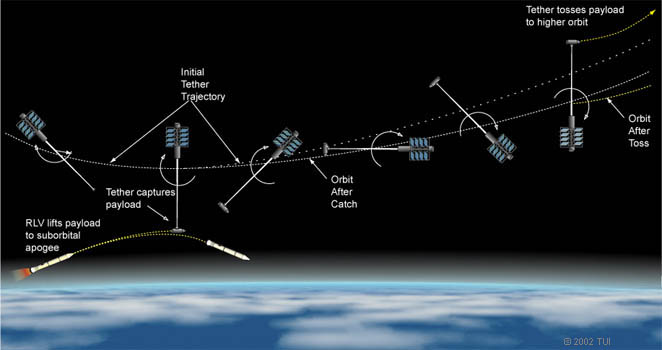
Image: NASA
The Skyhook project has several important advantages over the space elevator. It is cheaper to build and, importantly, does not require the use of technologies and materials that have not yet been invented. Designers claim that heavy-duty polyethylenes and heat-resistant zilon would be suitable for creating the Skyhook cable.
However, this construction would have its own nuances. For the Skyhook to remain in orbit, its mass would have to be two orders of magnitude greater than the mass of the payload. Another important feature is that the Skyhook works like a giant flywheel, storing torque and kinetic energy. The skyhook consumes the energy of its movement to launch satellites. This means that the height of its orbit would decrease after each launch cargo into orbit, and vice versa, increase after each delivery to Earth. That is, in order to reduce energy costs to a minimum, the flow of cargo going to Earth should ideally be the same as that launched into space.
According to some experts, the most suitable place to place a Skyhook is not our planet, but the Moon. The low gravity and lack of an atmosphere would significantly facilitate the process of creating and operating such a structure. In addition, it would be much easier to achieve equal cargo flow on the Moon. Skyhook would deliver supplies to lunar settlers and launch mined materials that could then be used to build other astrostructures.
Orbital ring
Another project for a global transport artery designed to deliver mass quantities of goods into orbit is called an orbital ring, also sometimes called a space bridge. The basic concept involves the construction of a giant skyway along the Earth’s equator (floating supports would be erected for it over the ocean). It would be mounted with the possibility of a slight elongation of the ring containing compartments for payloads. Inside this ring, there would be an evacuated tunnel in which a magnetically suspended band is placed. After being switched on, it would accelerate to a speed exceeding escape velocity, which would create lift. As a result, the ring would begin to rise and go beyond the Earth’s atmosphere. After unloading and taking the necessary cargo, the ring would land and return to the equatorial overpass.

Image: joyreactor.cc
Unfortunately, despite all the originality of the idea, there are several issues that prevent its implementation. In particular, engineering calculations have shown that such a ring would be too unstable. And this is not to mention the fact that in order to create it, the Earth’s equator will have to be “encircled”, which would be far from an easy task.
There are a number of modifications to the basic version of the orbital ring designed to eliminate these shortcomings. One of them involves the use of the instability effect. As conceived by the project’s designers, after activation, the ring would begin to rotate, and one part of it would remain on a special bed on Earth, while the other would go beyond the atmosphere, like a giant hula hoop. The result would be something like a planetary freeway. The part of the ring that lies on Earth would receive cargo to be sent into space, and unload cargo received from orbit. The part of the ring that protrudes beyond the atmosphere, on the other hand, would unload into space and receive cargo that needs to be delivered to the surface of the planet. And because the entire structure never loses contact with the surface, it could be powered directly from Earth.
Further development of this concept led to the emergence of astroconstruction projects combining the best aspects of a space elevator and an orbital ring. The essence of the idea lies in the fact that after the creation of the ring, cables would descend from it, which would then be used as space elevators. The fundamental difference from the basic version of the space elevator is that the ring would be at an altitude of only 500 km above the Earth’s surface, rather than 42,000 km. Creating a cable of this length would be within the capabilities of several already known materials.
Another important point is that the rotating part of the ring that provides lift would not have to be solid and enclosed in a hard shell. Instead, many separate magnetic objects and special stations could be placed in the desired orbit, which would accelerate them and change their trajectories. This would eliminate the need to build a giant overpass along the Earth’s equator, which would significantly reduce the cost of the project. It would be possible to use more traditional means of launching cargo to deploy the elements of the ring into orbit.
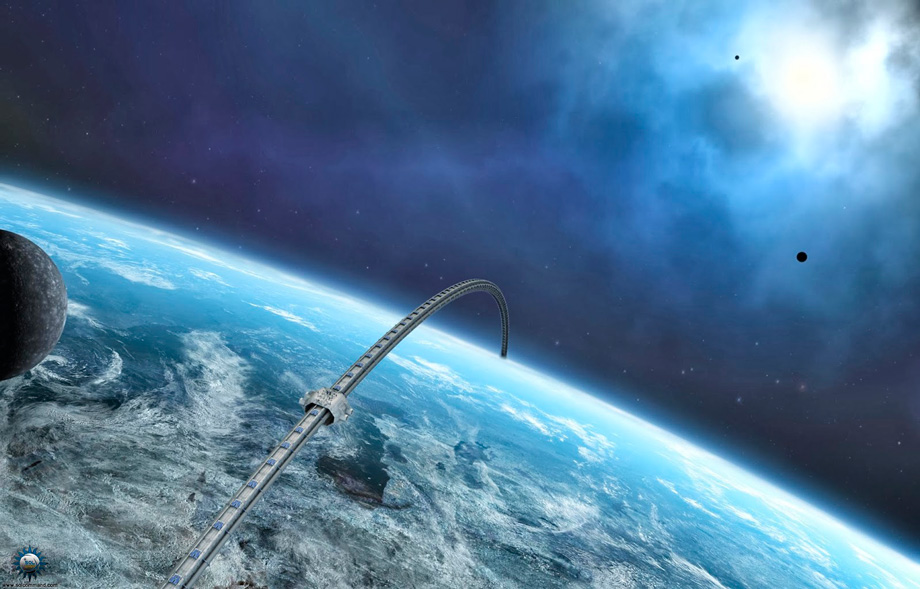
Image: solcommand.com
Of course, all these projects now look totally fantastical. There are not enough resources to implement them in any one country or even a group of countries. They will require the joint efforts of the entire planet. However, if humanity ever manages to reach the stage of creating a truly unified civilization, it may well build some of these structures.
In the last instalment in our series, we will consider structures of a truly astronomical scale – the Dyson sphere and the stellar machine.

